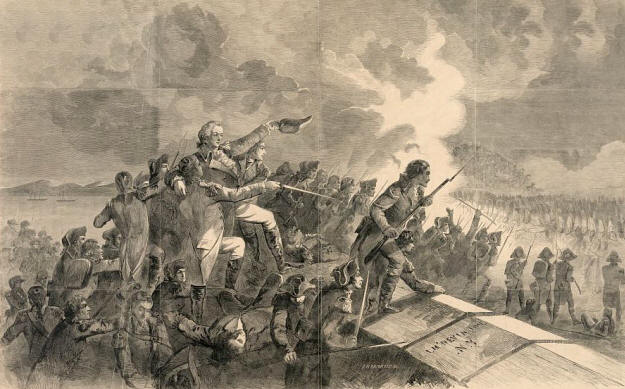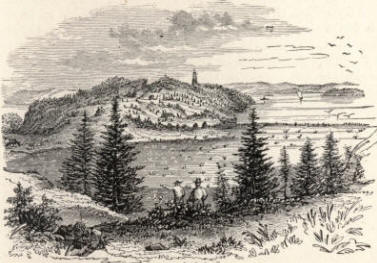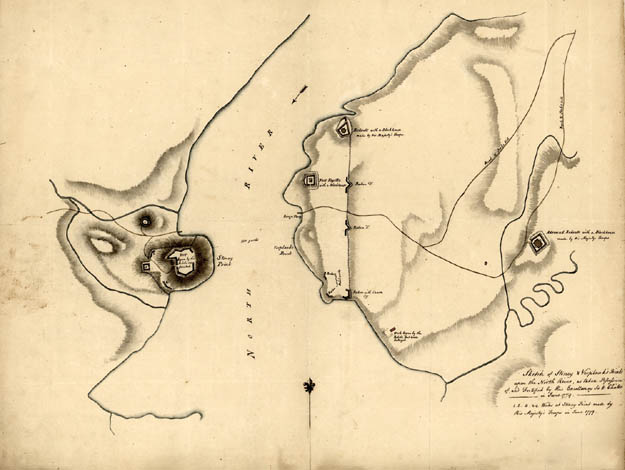Battle of Stony Point
|
|
This Site:
|
"Mad Anthony" Wayne at the Battle of Stony PointStony Point, CAPTURE OF. The unfinished fort at Stony Point at the King's Ferry, on the Hudson, was seized by the British on May 30, 1779. The fort stood upon a rocky promontory, connected with the mainland by a tide-submerged cause-way across a narrow marsh—an island at high-water. It was garrisoned by a regiment of foot, some grenadiers, and artillery, the whole commanded by Lieutenant-Colonel Johnson. General "Mad Anthony" Wayne undertook to take the fort by storm; and at the same time a force under General Robert Howe was to attack the fort at Verplanck's Point. Several small British vessels of war were anchored in the river, within cannon-range of the forts. The latter had been enlarged and strengthened. Upon a complete surprise of the garrison depended the success of the undertaking. With the Massachusetts light infantry, Wayne marched through defiles in the mountains, and rendezvoused, at 8 P.M., a mile and a half from the fort. Silently they had gained the spot, killing every dog on the way. At midnight they moved on the fort. A portion of the troops crossed the causeway, and formed in two columns, the van of the right, consisting of 150 volunteers, led by Lieutenant-Colonel De Fleury; that of the left, 100 strong, also volunteers, commanded by Major Stewart. These composed the forlorn hope. They moved to the attack at two different points simultaneously, with unloaded muskets and fixed bayonets, followed by the two main divisions, the left led by General Wayne in person.
Original Map of the Battle of Stony Point |
|
|
||
|
|
Site Copyright 2003-2018 Son of the South. For Questions or comments about this collection, contact: paul@sonofthesouth.net |
|
|
Are you Scared and Confused? Read My Snake Story, a story of hope and encouragement, to help you face your fears. |
||

 The
Americans were undiscovered until within pistol-shot distance of the
pickets on the height. The pickets fired several shots. The advanced
guard pressed forward with the bayonet. The garrison were aroused by
the roll of the drum and the cry "To arms! to arms !" Very soon
musketry rattled and cannon roared in defence of the fort, but the
Americans forced their way through every obstacle, until the van of
each column met in the centre of the work. Wayne had been hit on the
head and stunned by a musketball, but speedily recovered. The
garrison soon surrendered, and not a life was taken after the flag
was hauled down. Wayne wrote to
The
Americans were undiscovered until within pistol-shot distance of the
pickets on the height. The pickets fired several shots. The advanced
guard pressed forward with the bayonet. The garrison were aroused by
the roll of the drum and the cry "To arms! to arms !" Very soon
musketry rattled and cannon roared in defence of the fort, but the
Americans forced their way through every obstacle, until the van of
each column met in the centre of the work. Wayne had been hit on the
head and stunned by a musketball, but speedily recovered. The
garrison soon surrendered, and not a life was taken after the flag
was hauled down. Wayne wrote to
